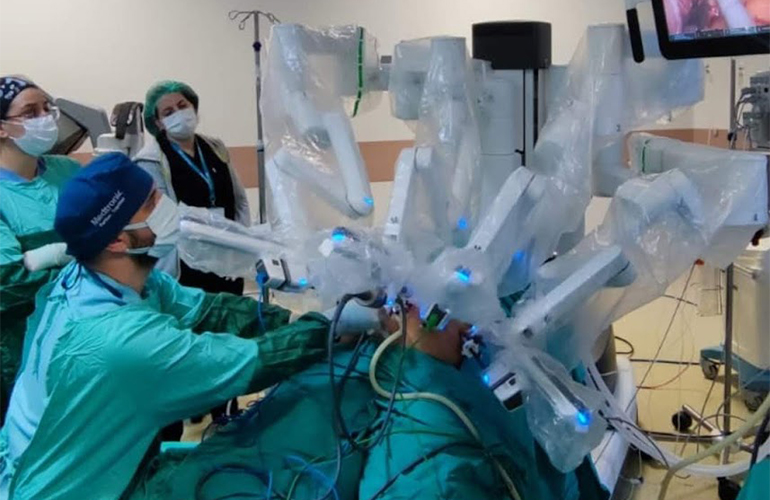
What is Robotic Surgery?
Robotic surgery, also known as da Vinci robotic surgery system, is the most advanced state of minimally invasive surgery. The da Vinci robot, the only example of robotic surgery systems in the world; It consists of 3 main parts: surgeon console, patient console and image tower. Commands from the surgeon console are transferred to the Da Vinci robot located on the patient console.
The da Vinci robot is dressed in a sterile special sheath. As in laparoscopic surgeries, incisions are made from the abdominal wall according to the operation to be performed, and instruments that allow the hand tools called trocars to easily enter and move into the abdomen are inserted. According to the surgery to be performed, the 3D imaging system is entered from the appropriate trocar. Since the imaging device is robot-controlled, it does not vibrate and the surgeon has a realistic three-dimensional vision.
Since the optical system transmits the image with high resolution and fiber optic cameras, there is no image loss even if the image is zoomed in. The surgeon can provide better than normal field of view images in narrow spaces and depths. Then, the hand tools required for the surgery to be performed from other trocars are entered. Robotic console connection is provided with hand tools.
The surgeon sits on the surgeon console and manages the robotic console movements with hand movements. Robotic arms, which have a rotation angle of 720 degrees, allow movements that are not possible for human hands to be made easily. Small tremors in the surgeon's hands are not reflected in robot-controlled surgical instruments. Thus, the margin of error that can be experienced in surgery is reduced to the lowest possible level.
Robotic Surgery in General Surgery
Robotic surgery can be used in most of the General Surgery operations.
- Surgery of the large intestine and rectum; Especially in rectal surgery, it increases the mobility in the narrow area of the pelvis, widens the visual field, and allows fine dissections.
- Obesity and metabolic surgery (Diabetes surgeries); It provides ease of movement in obesity and metabolic surgery surgeries, it provides guidance of the intestines and more comfortable anastomosis in the abdomen.
- Liver resections – hepatectomy, segmentectomy; With a wider viewing angle, it allows the bile ducts and blood vessels in the liver to be seen more easily and allows surgery to be performed with less complications and bleeding.
- Whipple surgery, total pancreatectomy and distal pancreatectomy for pancreatic cancer; Especially in whipple surgery, it enables the anastomosis between the pancreatic duct and the newly formed pathways between the biliary tract and the small intestine with more comfortable manipulation.
- Stomach and esophageal cancer surgery

